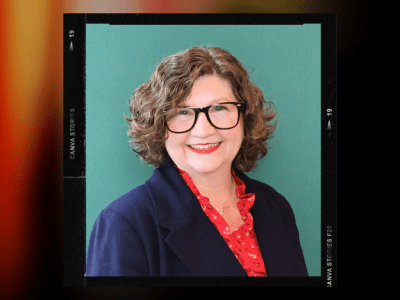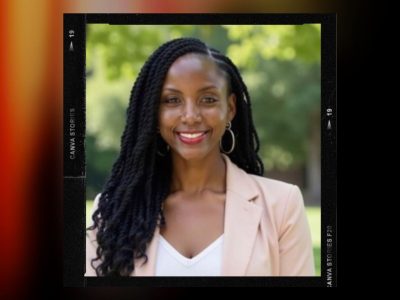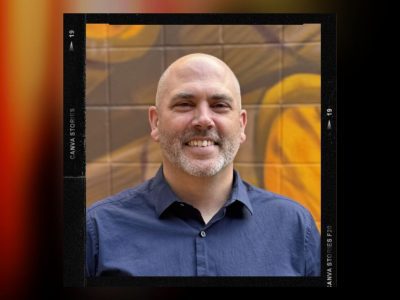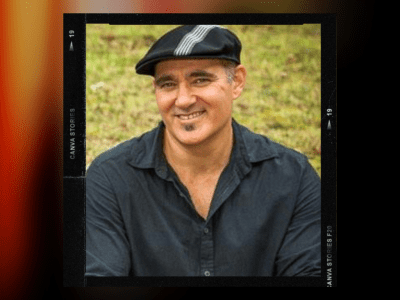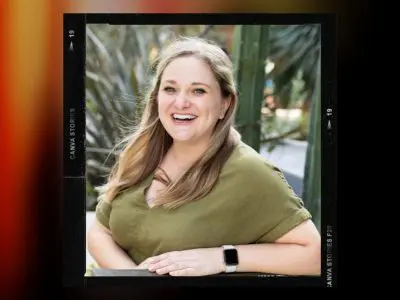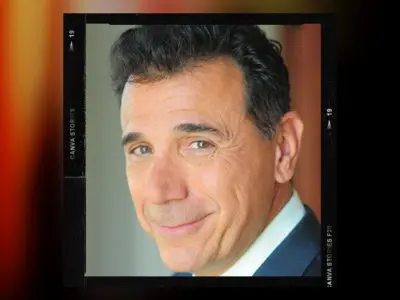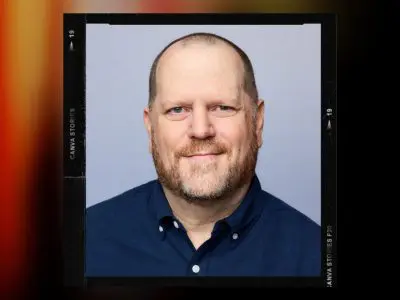Building a Workplace Culture of Female Empowerment
w/Asia Bribiesca-Hedin
Use the buttons above to listen now.
Transcript - Building a Workplace Culture of Female Empowerment
Rich: On this episode of team building saves the world.
Asia: Uh, little girls versus little boys are socialized to be like, it’s okay to be a little bit louder if you’re a boy, it’s okay to have be rambunctious you know, a bunch of boys, boys, right? Don’t look to the organization to provide you with the perfect opportunity
Rich: and they’re not going to give you the money.
Asia: And the only time we can bring our best thinking is when our thinking isn’t high-jacked by thinking that again, we already are, is not enough, right?
Rich: Because it’s generally about diversity. It all comes down to the bottom line.
Asia: I hate that that’s that’s what’s true.
Rich: But it is the truth, yeah.
Rich: Hello team. It’s me, your old friend, Rich Rininsland host of team building saves the world. The show where I speak to the leaders and innovators in employee wellness and corporate culture on how it reflects in the world of today. And today we’re discussing empowering women with the CEO of Bridgewell LLC professional services Asia Bribiesca-Hedin.
Rich: but first I need to share some love with my supporters at team bonding. If your team is ready to experience teamwork to the power of play, then visit team bonding.com to learn more now team, please join me in welcoming, an accomplished leadership coach and the CEO of Bridgewell LLC professional services.
Rich: Asia Bribiesca-Hedin. Hello, Asia.
Rich: Oh, yes, I have. I have a thousand people chained up under my desk just to applaud you. That is literally the only reason they’re here. They broken up into their own little teams and a lot of women are in charge. Right. Which brings us to the point of today. We’re talking about empowering women, of course, but I want to start off just telling my team out there a little bit about you.
Rich: Like, how did you get, how did this become your field of choice?
Asia: Yeah. Well, my background Rich is actually in management consulting. So as I was in business school at USC, like way longer ago than I want to admit, I went really a hundred percent and exclusively focused on becoming a management consultant because I heard about this thing called management consultant consulting, and it just sounded Amazing going in and helping companies create new capabilities or, you know, fix problems, just do things better.
Asia: That just sounded like a lot of fun. And then over the years, so that fortunately I was successful, I was able to get into management consulting, right. That didn’t, I didn’t have to detour from that. But over the years, what I found working with leaders inside of so many different organizations and across industries, it was that the best indicator about, of whether that priority, that initiative, that change, that new capability or transformation was going to happen.
Asia: Right. It was not always what people thought it was going to be. We often thought it was going to be like, you know, having the perfect plan. Perfect consulting team in place. Do it. It was everything perfectly resourced, you know, do we have the right leader at the helm? And what I found over the years and continue to observe today is that the best indicator of whether those priorities and initiatives and goals and dreams are going to kind of come to fruition and deliver on the actual promise that got them funded in the first place. Sometimes we forget to go back and look,
Asia: um,
Asia: the best indicator was typically whether the leader and the people involved in the change, actually thought they could make it happen. Like actually thought they could figure it out when things go sideways.
Rich: Okay.
Asia: Like it really came down to that. And once I kind of started connecting those dots, I, I realized how much I liked working on that side of it, of helping the leaders in the teams recognize the impact of being willing to kind of like have their own backs. If something goes wrong and putting their chief strategist hat on and thinking, okay, we got this, we can figure it out. How do we move forward now? Right.
Rich: All right. So let’s talk about empowering women. I mean, talking about not wanting to discuss how far back we all come up from. I can remember very clearly being aware enough in the eighties to realize that this was apparently supposed to be the time of women in the marketplace, but unfortunately, to do so meant that they had to wear outrageous shoulder pads and completely neutralize themselves to remove the women from the part of them being there.
Rich: But as, as I had been, had been led to understand changes were in effect, people were being, women were being recognized. Women were attaining higher offices than they had before. But then you still keep hearing the pay discrepancies. What is it? That’s like 70 cents for every dollar. A man makes something like that.
Asia: Yeah. But people with comparable background comparable experience for the exact same job, right?
Rich: Yeah. So how is this still happening and how bad is it now? Let’s start there.
Asia: Okay. For one, of course, yes, it is still happening. And we see it and I see it and hear about it every day from my clients. And while I don’t work exclusively with women, you know, I have, uh, some
Asia: men on the roster as well, certainly around the topic of, um, pay equity. The conversation really is with the women who I work with and the women executives I work with and how it’s still happening now, I think it’s that weird we’ve tolerated it. Like it’s okay. And we feel like it’s improving. So maybe we can take our eyes off the prize, but, but the reality is that
Asia: at least what I am hearing from my clients is that as women are moving and finally getting the opportunities and moving into those, those higher roles, the higher reach and the possibility of pay and equity is also increasing with it. Right. Which kind of makes sense if you think about it. Right if down here at, you know, whether you want to think about the entry or the mid level we have pay inequity, you can only imagine that pay inequity increases as you go higher.
Asia: In fact, not too long ago, I was with an organization, a person I’m not going to name any organizations or timeline, but where I learned I was making $60,000 a year, less than, than my male counterpart doing the same work. Shocking. Yeah, there it is again. And this, this wasn’t, you know, all that long ago. So it, I think it continues to happen partially because we have pay secrecy.
Asia: From where I’m sitting, right. That lack of transparency and openness around pay allows for those kind of, you know, secret inequities to continue and go, uh, unnoticed, you know, the other side of that I’d say is also that you have these kind of muzzling agreements with organizations. So even when someone let’s say a successful, challenging that, and getting, you know, some sort of adjustment modification, Or, um, even after the fact, some sort of settlement, there’s often some sort of, you know, muzzling that goes along with receiving that accommodation or that pay or, or that adjustment, whatever the case is.
Asia: And so we’re even less likely to hear about, you know, all of that’s happening and not happening and, and the kind of foul play in the background and all those things.
Rich: I will remember very specifically hearing somebody had been saying how a lot of this comes from the fact that women don’t know how to stand up for themselves when it comes to salary negotiation, that they’re the first ones to actually say.
Rich: And this was only maybe five, six years ago that I last heard this where it was women are the first ones to say the salary you’re offering me is fair enough. I’ll take it. Whereas a man will go, Nope, let’s talk about how, how, how much higher you’re going to go. And then they will be more aggressive and their negotiating for themselves, but the women didn’t have that tactic at their disposal.
Rich: Is that, is there any truth to this or is it as ridiculous as it sounds,
Asia: you know, it does sound ridiculous and I think there was some truth to it, but I’ll tell you, that’s also, you know, it’s less nature than it is nurture right. Because if you think about it, the way that, um, even today, you know, little girls versus little boys are socialized to be like, it’s okay to be a little bit louder.
Asia: If you’re a boy, it’s okay to have be rambunctious, you know, a bunch of boys, boys. Right, right. We never said that about girls, about girls. And so there’s this expectation. And, um, this kind of unspoken agreement that we should be more modest. We should be more humble. We shouldn’t be more, more, more, you know, kind of gracious and grateful, you know, than our male counterparts.
Asia: And so we don’t get into those uncomfortable conversations and negotiations, and they’re just glad to be here.
Rich: I can’t help, but laugh because I know. I mean, I am so on the outside when it comes to the corporate world, but the women that I have met throughout my, the entirety of my 50 plus years, none of them would equal that sort of demure representation. So, so, okay. We kind of understand where it started. And we understand a bit where the pay discrepancy is coming from.
Rich: Not that it’s good. Not that it’s fair, but we see it. We know that it’s there. What else are we looking at? I mean, there was the whole, me too, which is unfortunately gone far too quiet because I know it can’t be done now.
Asia: We know it’s not done. Right.
Rich: They shine the spotlight and the cockroach is scary. Yeah, but it’s not over.
Asia: No,
Asia: no,
Asia: I don’t. I don’t think it’s over by any and every stretch of the imagination. I, I do think though that. And I don’t know, you know, again, I have perspective from what my clients bring me, but what I have heard out there, not even necessarily from my clients directly is that there’s been this sort of supposed backlash right now.
Asia: It may just be the, the, the men who feel pointed out. But this sort of has a tation to then take women under your wing to be a male with a female mentee, or to do a sponsor to a female mentee for fear that it will be either misconstrued or that you’ll be accused of something or whatever the case is.
Asia: But you know what I’ve got to say about that. And, you know, I got something to say about that.
Rich: No really
Asia: though what I have to say about that is that if you are, you know, one of those folks who are coming from the right place that didn’t recognize how much the line had moved. Then I, I get it. You know, there’s going to be some summing stumbling ground and maybe some grace and some kind of accommodation.
Asia: But if you’re on the other side where it’s coming from a well I’ll show you, you’re going to say that I need to behave in a certain way, or I need to treat you in a certain way. Or that I’m telling you, you look nice, you know, somehow is taking away from your valley and professionalism and I’ll show you, I’m going to make myself unavailable.
Asia: I am. I’m not going to mentor. I’m not going to see you as a viable candidate for moving you up the ranks, even when you’re ready. Right. It’s hard to say where that’s coming from. I do still think that all of that is still it’s still getting worked out, but I’ll tell you, I think it was also interrupted because of the pandemic.
Rich: Sure.
Rich: Yeah. Everything kind of came. Everything came to a stop.
Asia: Yeah.
Rich: Even, even the benefits, even the, even the things we were trying to improve, suddenly we had to shift all of our attention away from
Asia: absolutely.
Rich: Okay. But now just talking about women in the marketplace, I was looking at an article that was saying that while we are seeing a rise and an increase of women in the corner office, they got there.
Rich: Now they’re in the positions of power and it’s still only like 6.4% of uh, fortune 500 companies have women in those leadership roles.
Asia: Yeah. It’s still, we have such a long way to go. And the thing is, you know, we keep saying the, you know, if you’re on LinkedIn or whatever, social media you’re on, you know, you have the organizations who are touting the fact that they have their first woman on the board or their first, you know, fill in the blank, you know, black c level, whatever, or chief executive of this and that, and the fact that we still need to call those out. We know they’re still an issue. Right, right, right, right. You’re calling it out because it is the outlier
Rich: and this has been going on for 50 years.
Rich: I can only remember it becoming an issue starting in the eighties where you had your Martha Stewart’s, you had those women of power who were in the higher reaches of office but there were still so few and far between, and they are now while improving still so few and far between yet their training has been just as good as the training that the men had received their education levels in most cases were higher.
Rich: Yeah. Yeah, because they understood that they had to be the ones to get the degrees. Whereas the men who started in the mail room and got to build themselves up.
Asia: Yeah, exactly. Exactly.
Rich: So what I want to do as I want to start now that we’ve talked about where we are and how much farther we have to go. I need to step away from you for a real quick second, because my producer Anna is buzzing away in my ear to remind me.
Rich: That I need to tell my team out there about a company I’m very proud to be a part of myself. Team bonding team bonding was founded over 20 years ago with one simple question. How can employees have a great time while fostering strong, authentic bonds between people who work together? They’ve created a catalog of innovative events using the power of play as a learning tool and tapping into the correlation of work and play.
Rich: From scavenger hunt to jeopardy and so much more the team bonding of activities with a live virtual or hybrid maximize the impact of team building with an accent on fun. So visit team bonding.com to schedule your event. Team bonding when you want seriously fun results. And we are back with Asia.
Rich: Asia okay. So it’s not great, even though it is improving, how can we make it better? Where’s the next step we need to go.
Asia: So I guess I would answer that from two different perspectives, right? So one from the side of the organization, Okay, right, right from the side of the organization, people in decision-making roles and positions of leadership, get really curious when having women in places of power or certain groups or characteristics in places of power are still outliers in your organization.
Asia: Get really, really curious and start to question what it is that’s going on that has you unable or unwilling to recognize leadership and potential and the contribution of those certain groups.
Rich: And when you say, get curious, are you talking about women within the corporation, women coming into the corporation or just anyone?
Asia: Yeah. Anyone in a position of leadership who has an interest in ensuring that their organization is really capitalizing on the best that everyone’s individual leadership has to brand. I mean, that’s really what it comes down to, right. Because when we decide we’re going to be blind to someone’s contribution or their way of contributing, we’ve not only closed the door to their contributing in the future, but really lost the opportunity to see how that fits into the bigger picture.
Asia: Right. So there’s that, that kind of organizational stuff. Get curious, like what is happening in your organization? You know, that it is still noteworthy that a woman or a person of color or whatever the case is, is now in the C-suite. Why is that noteworthy? What is so surprising? You know, what cop calls it to be so surprising?
Asia: So that’s one side. Now the other side, now this is for the women and anyone else who needs to hear this inclusion is something that needs to happen and be a focus and a lens through which organizations make decisions. Right. So that’s why I asked you to get curious on that side. So. I want to make sure that there is no question here that I’m saying it is the organization’s responsibility to make business decisions through the lens of inclusion.
Asia: Exactly the way it’s the organization’s responsibility to make business decisions through a lens of integrity, for example, right. It’s a lens. It goes without saying it’s not a checklist. It’s a lens through which you see the decisions you make. Now bringing it back to the individual, right? To a woman, to the, the candidate, the applicant, the employee, whatever the case says.
Asia: I want you to decide whether you want their inability to get it right to be what dictates, how you show up. Okay. So. Let them get it backwards, let them be late to the party. If that’s what they’re going to do, you know, that’s not what they should be doing. Right. Let’s get clear about that. Yes. But now you get to decide how you’re going to let
Asia: their backward notions, their bad behavior, their poor citizenship impact your leadership effectiveness, how you show up the way that you’re able to articulate what and how you contribute. So you’ll see, we’re not taking the onus off of the organization, but what we are doing is bringing the empowerment back to the individual to say and yes, you know, they are, they’ve got it fast backwards. Pardon my French, you know, and I get to decide now how I want to show up how I want to represent myself. I want to advocate for what I know needs to happen. Um, how I want to elevate others in spite of them not having a lens of inclusion. Right. So I think that that is where we have the biggest opportunity, you know, don’t look to the organization to provide you with the perfect opportunity
Rich: and yeah, they’re not going to give me the men.
Rich: They’re not going to lay it out for you. Here’s your steps to success.
Asia: Yes. Yes, because less and less are we seeing that? Right. But we’re not seeing that. And same thing goes for your career path in general, you know, when we used to look at organizations and there was a clear career path, and like you said, you might start in the mail room or whatever it is.
Asia: And then you knew what the path was and where the opportunities lay and where you’ve been a branch from one area to another, that simply doesn’t exist anymore. You know, so what does that mean? That does that mean that there are no career paths? Of course that’s not what it means. What it means is that we need to be the chief strategist for our careers.
Asia: Right. We need to design and define what that might look like for us. And then from that place, with that clarity of what we’re trying to accomplish, you know, how we want to contribute this organization or the next we can go ahead and decide kind of, you know, like if that’s the destination and maybe you can’t take a direct bus over there. Like what connector buses do I need to take to get there? If that makes sense.
Rich: Yeah. Okay. So how do we do it? How do we empower these women? What can we give them that will help them to make these decisions for themselves?
Asia: I think make it safe to screw up. And that goes for everybody!
Asia: Right. That goes for everybody everywhere. If you want people to be empowered and bring their best thinking and contribute from the highest of their abilities, make it safe for them to screw up. Let them know that a screw up is not a death sentence for their career. Right. And individually, we also need to recognize that failure and screw ups are not a death sentence for our self-esteem.
Asia: Well, you get way significant about setbacks or about being embarrassed or about getting it wrong or not getting picked, or I don’t know. We get really significant about that stuff. That’s not what it means. We love to see everybody’s success story, but we don’t want to look back at the spills and the tumbles and the scrapes and the bruises and the setbacks on the way.
Asia: Like, we want to forget that piece. Right. But we still go with the platitudes of, yeah, of course. There’s no success without failure. We say that, but we may not for everybody else know,
Asia: but
Asia: it companies do that too. Teams do that too. No, it’s real. There is no success without failure. So make it, you know, create that environment where people want to bring their best and go L all out. And, you know, if they screw it up, they screw it up with an eye towards, and now what do I need to do right to make this better. So how can you shift that lens from you know, being a dig for your team or that individual, you know, the woman on the board having gotten something wrong and turn it into all right for stepping out and being bold. Now, what, where do we, where do you want to take the snail? Okay.
Rich: What else?
Rich: I mean, okay. Allowing for screw ups, because it’s going, if I’m, if I’m allowing the men to screw up, because God knows over the years they have, then we got to let everybody screw up, so, okay. What else is next?
Asia: Oh, gosh, let’s see.
Rich: I think that that’s a huge step. I completely agree. That’s giant steps. Yeah.
Asia: Yup. They stay curious. Right? I know. I started there with being curious, stay curious, like what’s missing in this room who’s missing in this room. What assumptions are we making about who can and cannot fulfill on this role? And how can you actually invite people, you know, who are interested into that, that stretch space?
Asia: You know, we used to talk a lot about stretch roles. I feel like there’s a lot less conversation about that now. I don’t know
Asia: if it’s because.
Asia: Yeah, well stretch roles being the opportunity to do a role that maybe you’re not quite ready yet, but that a sponsor or a mentor thinks, you know, what, you can grow into it, you know, and it might be a stretch project or initiative or season or something like that, but really having that opportunity to try it on and get it wrong, you know, and learn in the process.
Asia: Cause I mean, that’s the thing. When we give people permission to, to fail and to get it right. We’re, we’re, we’re creating this opportunity for them to actually learn from experience for them to get curious about how to do it next time and, and kind of start to build that kind of courageous approach to work as they go.
Asia: Right. It doesn’t mean that they’re not going to have self doubt, but you’re kind of normalizing it and saying, okay, try it. You know, bring that scientist’s brain, try it and see what works, see what doesn’t, what can we learn from what didn’t work? How do we take this forward with us? I think the worst thing we can do, or a lot of worst things we can do, but the worst things we can do is have people feel like, unless they get it right, that there’s no value to their contribution or there’s no value to their effort.
Asia: Okay. Right. Cause what, what kind of leadership direction does it take to take a perfect team and have them deliver? It takes very little. What you want is to take the team you have and have them deliver. And that’s why I love what you guys do with the team bonding and having people actually be curious and open enough to get to know each other and like each other.
Asia: It is a big deal when you consider how much time we spend at work, our willingness to be courageous, like what I was just talking about. Yeah. Is going to just grow exponentially if we actually like the people we work with and feel like we respect them and they respect us, it doesn’t mean we agree on anything, but what has nothing to do with theater, but you can know that they’ve got your back.
Rich: And that sounds like a really strong, positive step, like a positive effect that comes about from the self-advocating from the permission to fail. How do we convince a corporation that allowing for all of this, even though it’s not been a part of that particular corporations, corporate identity, what’s the benefits they need to look at and see that it’s, that it will actually allow for positive growth for the company itself.
Asia: Yeah.
Asia: I think honestly, every time that an organization talks about innovation, this is what they’re talking about. If, if they’re trying to have a culture of innovation and people bringing new ideas and new lenses again, through which to see the work they’ve been doing, right. It is because they’re allowing for this.
Asia: The problem is we have the organizations that like to toss out the word innovation, but that’s not what they mean.
Asia: They may mean we want guaranteed results with no possibility of failure setback, embarrassment.
Rich: We’re going to show you all the new ways we’re going to do exactly the same thing because it’s worked in the past.
Asia: Yes
Rich: Plus if we’re looking at the actual makeup of the corporate culture now you’ve got the millennials who are the largest generation currently existing in the workforce. Plus you’ve got now generation Y coming into those areas themselves they’re graduating from, or if they’re going to college with that eye towards business, and they’re going to start internship soon.
Rich: And so forth, or they’re ready to graduate and just jump into the pool because we know that these younger people look at companies and they’re looking for this kind of diversity. They’re looking for that positivity. They’re looking for the company. That’s different enough in their line of thinking. Is that just another possibility
Asia: to help a company realize that this is what we need?
Rich: Yeah. Cause it’s generally about diversity.
Asia: It all comes down to the bottom line. I hate that that’s that’s what’s true,
Rich: but it is the truth. Yeah, yeah,
Asia: yeah. It all comes down to the bottom line. So I think that for organizations who’ve been able to capture the cost and impact for example, of turnover and key talent leaving and losing key contracts to organizations who expect something different more you know, whatever the case is, it becomes apparent the challenges, the organizations that have gotten so big or have such a backing that unfortunately, as someone once said, you know, they could walk out on the street and shoot somebody and people would still come to their, to their aid. Right. Somehow
Asia: I’m sure, you know, I’m just saying some organizations.
Asia: Yeah, that, that have that going on. Right. And so it almost comes down to, and I know we’re talking very specifically about business and careers in this space, but about how we’re making decisions elsewhere, right. About those organizations. Like, is it okay that the board of this, you know, 300 year old company or whatever the case is, it’s still all white males, right?
Rich: Right.
Asia: They’re not at all hesitant about marketing in the communities that don’t look like that and taking money from those communities, but it is where, you know, to what point and how long is that acceptable.
Rich: Okay. So let’s look at it from the other end. What are the companies that are doing it right, doing right? What’s the shining example on the hill of what this company is doing that are going to draw people to them.
Asia: I love that question. I’m trying to, what’s coming to mind right now is I’ve been seeing a lot of talk about returnships or women, you know, returning to the workforce who might’ve been away, either on a career break, taking care of a family and the parents, children, whatever the case is, and then actually creating opportunities for women to come in with the support and the structure to then get them into these positions that really would kind of harness their background and their expertise and their education and all that good stuff. And one that’s coming to mind. It’s it. I, I, I’m not going to name it because I’m going to forget if I’m saying the right consulting firm, but it’s one of the consulting firms who actually has this beautiful returnship program.
Asia: And I think that that is a model that it’s going to serve, you know, not just women returning, but people with I kind of those, those neat, unusual backgrounds that like, when they walk in the room, they bring a whole different lens. Right. And that like opens the door to that kind of like the, the programs that try to bring more veterans into the workplace because they see the benefit of uh, well, not only serving to people who serve our country.
Rich: Right.
Asia: But in addition to that, of bringing in that different lens and different way of doing things specifically to what you alluded to a minute ago, because we’ve always done it that way. And doing more of the same that we’re going to call it by a different name, but it’s really the way we’ve always done it.
Rich: It is remarkably hard for a room full of men who, to be honest, look like me, who are all going to be agreeing with each other because they all come from similar backgrounds to come up with a new idea. So the diversity that is eligible from bringing in, not just women, women, because when we talk about women, we’re talking about women of color, we’re talking about LGTBQ plus women were talking about differently abled women.
Rich: It’s that simple change of perspective that sparks imagination.
Asia: Yeah.
Asia: You know, we get to a place where we think that. The options and opportunities that we recognize are the universe of options and opportunities. Like we actually think we can see it all. And that there’s just nothing. Right. What we don’t understand is it’s kind of like we are looking into the house, which is the universe of opportunities. What we don’t understand is we’re looking through a specific window. We don’t even realize they’re like 12 other other windows we could be peaking in through like no idea. We think we’re seeing the whole thing. So yes, anytime we can bring somebody on board to help us look through peek through a different window.
Asia: Everybody wins. We get a more complete picture of what those opportunities actually are what the rest of that building and then the house looks like.
Rich: How is that success impacting others? Is it still being shown shown as just the outlier or is it every woman is able to see it and go, I want to be them next.
Asia: You know, I don’t know that we were at the place where we. Yeah, I’m really thinking about this question. I don’t know that we’re at a place where you’re just saying, yeah, that’s going to be me next. I think we’re definitely getting there. I suspect that our gen Y. Are coming in, certainly with that perspective, I think with a gen X being, you know, where I am, right.
Rich: The quietest generation. Yeah.
Asia: That’s what they say and we built everything that we use today. So I’m not leaving a bag, but if you look around at everything, of value to they today almost we it’s been built and is run by gen X. So we’ll, I don’t want to detour us too much.
Asia: Well, we’re not that quiet, um,
Asia: that, you know, all of that said, I think for gen X, we still, we don’t see it as a foregone conclusion that just because we are contributing effectively building the right relationships, showing our value.
Asia: We’re going to have that opportunity. I think we still have it that we’re going to need to be willing to do three times as much. And I hate that that’s still the perspective, but I think that that’s still there. I do believe that that’s starting to to kind of level out to where people are, the younger folks are coming in and thinking, yeah.
Asia: Okay. That’s, that’s the path that I’m going to take or I’m going to follow in so-and-so’s footsteps. We see enough examples now that we know that it’s doable. And I also think we’re starting to reproach. I catch myself doing this and reminding my clients, this is that why not me?
Rich: Sure. Yeah. I mean, we would hope that the end product of all of this would simply be this discussion and the reality would be that it is simply a matter of at one point we’re just not even going to realize whoever you are, what gender you are, what identity you have is important, but it is not going to stop you from being the one to do the job,
Asia: right. It may not even be a factor, not the way it is today. Right. It may be more of a factor of, oh, that’s an interesting lens through which to look in the building.
Rich: Exactly. Yes. And this is something I did want to actually ask you about. We are I’m being yelled at by Anna because this conversation could go on for hours on your Instagram I did notice where you said how you can, you can train these people to do what it takes to succeed, but not to surrender their soul to do it.
Rich: I love that. Please explain what you mean by that and how it actually works.
Asia: Yeah. Here’s the thing, right? We’ve all heard the notion of playing the game. Yes.
Rich: Yep. Yeah.
Asia: That, after being around for more than a couple of years at work, you heard the notion of playing the game and at some point you start to recognize what that might actually mean.
Asia: Right. And unfortunately, what that often means is setting aside the, the values that you consider to be core to who you are and maybe swapping them out for what you see as valued by the organization.
Rich: Yeah.
Asia: Okay. And so it might take the place of, you know, it might take the form of people pleasing and being a yes person, letting your integrity get a little slippery, you know, For the benefit of the organization or for the benefit of your career and from where I’m sitting, the best leaders are unapologetically themselves.
Asia: They’re not even the most liked or loved, but they’re effective because there’s a certain consistency and command with which they can walk into any situation, any unexpected and bring their best thinking. And the only time we can bring our best thinking is when our thinking isn’t hijacked by thinking that again, who already are, is not enough, right?
Asia: When we get hijacked thinking that. You know, we’re not enough like bill over there, or we don’t have the exact same background, you know, as Jen or whatever the case is, we have already put ourselves at a disadvantage, not because of that difference, but because now the quality of our thinking has been compromised by that rumination.
Asia: Right. And so I, I want us to come to a place and the way that I do that, You know, I won’t get too far into it, but it’s kind of looking, starting with self-mastery and distinguishing what’s most important to you and why, and then how you want that expressed in your leadership, how you want that expressed in how you show up and how you elevate others, getting clarity on what’s actually important for your role, because what I find a lot of women doing and really people in general is that when in doubt do more, I’m like, no, that’s not how that works.
Rich: Yeah
Asia: you don’t just pile on in hopes that something somewhere will stick.
Asia: Right, right. Then you can be deliberate.
Rich: Then you’re facing burnout.
Asia: Yes. Yes. That’s what burnout is. At least that’s how I teach it. Burnout is just doing, spending your time, doing the wrong things. That’s what burnout is because you know what, when we’re doing the right things and we see that our work matters, I don’t know, you know, eight hours slips into 12 hours slips into 15 hours and we don’t even notice because we’re so in it.
Asia: Right. So, and yeah, I can go on, on this piece for a bit. And the last piece is really the leadership style.
Rich: I think it sounds to me like we’re going to have to have you back at some point, because
Asia: we can definitely talk more about that, but definitely it is about being true to yourself because from there you’re showing up in a way that others respond to even better.
Rich: Okay. I do want to talk real quick. The pandemic happened and like you said, a lot of things that were on a positive upswing, came to a halt because then we had to quickly shuffle and, you know, redirect ourselves and start talking only on really small cubes on our computer screen. Now it’s coming back. What are we seeing?
Rich: Are the improvements re-emerging or were the improvements continuing throughout the entirety of the past?
Asia: It might be too early for me to comment on that piece. But what I will tell you briefly is that obviously we know, and there’s a lot of talk about how these last two and something years have been a real point, a inflection point and a source of reflection, right.
Asia: For, for working professionals. And so I think definitely what we’re I’m seeing is that there’s a lot of hesitation to going back to the way things were. People want to like what they’re doing, right. People, I don’t know if there’s a sense of, you know, recognizing our own, I dunno what longevity, no. And choosing mortality, you know, or something like that.
Asia: And wanting to spend our time in a way that matters in a way that feels good and still of course pays the bills. But I, I just, I feel like, you know, obviously the dust hasn’t settled, it’s still settling and companies are still fighting and employees are still fighting with whether come back, partially, come back, stay home, you know, and what that’s going to mean.
Asia: So ask me in a couple of years.
Rich: Okay. All right. I’ll mark it on my calendar. I want to wrap up this way. If we can. I have a 16 year old daughter. She is not business-minded unfortunately, she’s more like her father. So I keep saying that you need to find something else to help, whatever career you want, which means you might be going into business at some point.
Rich: What can you say to the young women of today who are getting ready to start their careers? How do we help them to hit the ground running as best they can?
Asia: Oh man. So I don’t know if you can see, I had a class a couple of nights ago. So this is on the screen. It says, what is your decision driver? What I would say, and I have a 23 year old daughter, and here’s what I say to her.
Asia: It’s to be aware of what’s driving her decisions. And what I mean by that is when you’re thinking about your future and what you want to accomplish. Are you being driven by, you know, that inspiring vision or are you being driven by fear of something else that might not work out right. Or ego of what other people might think?
Asia: And here’s has the thing I’m not even saying that it’s wrong to be driven by those other things, but it’s the wrong and the part that I say makes the difference is when we’re aware of what our decision is, being driven by. Right. So just, just know what it is that’s driving your intention. What do you want to do with the next five years?
Asia: And how’s that going to make you feel? And is that the feeling you want driving your intention or is it the certainty that you want driving, you know, your next steps or what is that, you know, just to stay with that. What is that? What’s driving that decision.
Rich: Thank you so much, Asia. I cannot tell you how much this has meant to me this.
Rich: I say this a lot on these shows when I’m talking to my guests, because my God, my people managed to get me the best guests, but this was a fantastic conversation and so important.
Asia: Oh, thank you so much. I’ve loved being here so, so much, and definitely look forward to, to being back. And in the meantime, anyone wants to find me, you can find me on LinkedIn or leadership division.com that takes you to my site.
Asia: And I hope to see you at one of my upcoming events.
Rich: Plus you do actually offer in-person and virtual assistance.
Asia: Yeah. Right now it’s virtual. So I, for my coaching, however, I do actually go to live events. So I have one, for example, coming up in Anaheim next week, and I know they’re coming up in OHI and San Diego in the next couple months.
Asia: You know, in-person is coming back, but for now my coaching and my programs are virtual,
Rich: Please everyone out there, my friends, my team, give me a big round of applause for my guest Asia Bribiesca-Hedin. Thank you so much again for coming on and I hope you have enjoyed yourself here because, um, it’s time to put you on the hot seat.
Rich: Here commons my speed round.
Rich: just my little silly cheese. So Asia as I uh, as I was trying to tell you this a little bit before the show started, uh, here’s how this works for 60 seconds. There’s going to be some music playing that just keeps me in mind of how long we have talk. I’m going to ask you a series of completely innocuous questions.
Rich: This is just for fun. But if you’re feeling competitive at all, the number to beat is 13. So you need to try in 60 seconds to answer 13 questions. Okay. Okay. Yes. Feeling up to it
Asia: And we’re, we’re gonna, we’re going to bring it. We’ll see.
Rich: All right. Good luck to you because the questions start now. What’s your name?
Asia: Asia
Rich: How many kids do you have?
Asia: Three.
Rich: Which one’s your favorite?
Asia: None
Rich: Do you have any pets?
Asia: Yes
Rich: What’s the best piece of advice you’ve ever received?
Asia: Don’t take all advice as equal.
Rich: Uh, would you rather spend five days exploring Disney world or New York city
Asia: New York city?
Rich: Who’s your favorite athlete?
Asia: Oh man. Tiger Woods
Rich: um, what’s the most important thing you learned in kindergarten
Asia: playing nice.
Rich: Uh, what TV family most reminds you of your own?
Asia: What is Rosanne’s family?
Rich: Okay uh, what do you like to do on a rainy day?
Asia: Oh, watch movies.
Rich: And there we go. 60 seconds. See that wasn’t so hard. Was it all right? You got 10. You got a very, very honorable 10 again, Asia I’m glad. And thank you so much for coming on board. We look forward to having you on again, hopefully sometime soon, but if not, I’ll talk to you in two years when you know, you’ll have those answers ready for my questions.
Asia: This has been so much fun.
Rich: Thank you. That’s great to hear. Thank you so much. And thank you, my team, that’s it. We wrapped up another episode of team building saves the world. If you’ve enjoyed this episode, whether you’re new to the podcast or an old fan of the show, please be sure to share it with everyone. You know, whether they’re a coworker friend, family, what have you.
Rich: It matters to us because we need to share this vital information we’re discussing here. You can find out all about us, including all of our past episodes@teambonding.com/ podcast, you can also find us wherever you find your favorite podcast, Google podcast, apple podcast, Spotify, or wherever you go to listen, we will be there.
Rich: If you go someplace that doesn’t have us reach out to us on social media, let us know because I want to be everywhere, and thinking of those social media you can find this all over the place at team bond podcast, that again, team bond podcast. Leave me a message. Even if it’s not telling me where you want to hear me, you can at least tell me what you like to show when you have an idea for a future episode.
Rich: A topic you want to hear us discuss, I want to hear from you. So my friends, before we say our final farewells for this episode of team building saves the world. Please never forget that if you are within the sound of my voice, you’re on my team now. And I am forever going to be on yours so long team and I’ll see you all next time.
Rich: It’s been said that you learn more about a person in an hour of play than in a year of conversation. So why not put your coworkers to play with the help of the team at TeamBonding. TeamBonding was founded over 20 years ago with one simple question. How can employees have a great time while fostering strong, authentic bonds between people who work together?
Rich: Their catalog of innovative events include scavenger hunts, jeopardy, and much more. Each activity, whether live, virtual or hybrid maximizes the impact of team building with an accent on fun. Visit teambonding.com to schedule your event now. TeamBonding when you want seriously fun results.
May 24, 2022
Organizations that don’t realize the benefits of female-led workplaces are missing out. Research by McKinsey & Company found that organizations with greater diversity at the executive level tend to have higher profits and longer-term value. Listen as Host Rich Rininsland speaks with Asia Bribiesca-Hedin on how to encourage female empowerment in the workplace and create an environment where they can thrive.
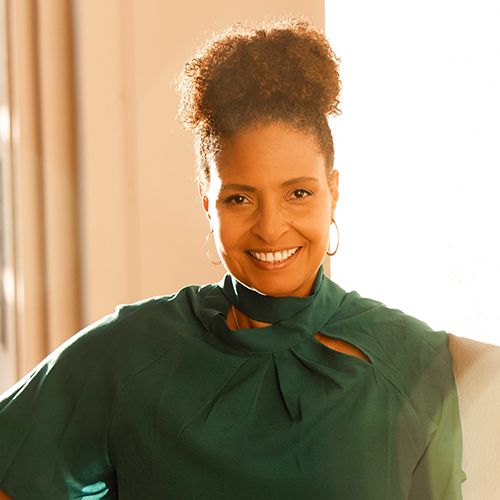
Today she brings her strategic lens to coaching executives and professionals at any level to become influential, sought-after leaders and create the results that matter most to them, their teams, and their organizations without overworking, people-pleasing, or selling their souls.
" It is the organization's responsibility to make business decisions through the lens of inclusion. Exactly the way it's the organization's responsibility to make business decisions through a lens of integrity, for example, right. It's a lens. It goes without saying it's not a checklist."- Asia Bribiesca-Hedin

Get more human resources and leadership advice.
Less drama? Greater teamwork and job satisfaction? TeamBonding is here to help you build a stronger and happier team. Subscribe to get our team building podcast and thought leadership blogs sent straight to your inbox.





